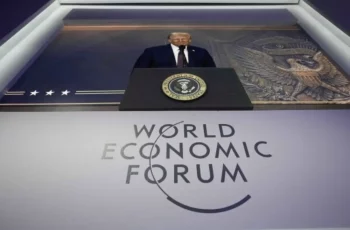
Although the world has clearly ceased to be unipolar, the United States is striving to maintain its instruments of control. Moreover, if earlier it was in a veiled form (the concept of global leadership and multilateralism under Barack Obama), then Donald Trump decided to act aggressively, causing a serious resonance with his statements on Greenland, Canada, the Panama Canal and even NATO, thereby weakening the ties of the transatlantic partnership. Therewith, some globalist structures also found themselves under attack – the United States withdrew from WHO, does not recognize the International Criminal Court in The Hague (and Hungary withdrew from the Institution the day before), and also suspended funding for the WTO and a number of other international organizations as part of its inspections.
And these actions are also directly interrelated with the growing multipolarity, which, despite the geopolitical turbulence, is gaining momentum.
However, concurrently, some institutions of Western global dominance, such as the World Bank and the International Monetary Fund, continue to operate. Beyond that, the United States is trying to strengthen bilateral ties with its clear dominance over a partner country, which is thus becoming a satellite of Washington.
Is there an opportunity to resist the weakening hegemon and form own international agenda and new rules? Ultimately, both historical experience and the new situation indicate that despite the fact that the United States is still the strongest military power and has financial advantages in the form of a reserve currency printed by the Federal Reserve Fund, such opportunities do exist and they are beginning to be actively used.
Individual cases, such as the resistance of the North Korea, as well as the confrontation between Cuba, Venezuela, Nicaragua and Iran, demonstrate strong political will. However, not everyone has it, and many medium and small states prefer to move towards the mainstream. Therefore, the main issue is the formation of a dominant trend. More precisely, the continuation of the formation of multipolarity.
Anti-colonialism, strengthening sovereignty, technological development and honest international cooperation are the main criteria of the BRICS club, which is expanding and arousing interest around the world – both in the Global South and in the Global East (the latter term is relatively new, but reflects a broader approach to the polycentric world order).
However if BRICS was formed according to parameters related to economic growth, there are other associations that adhere to the mentioned criteria for the formation of multipolarity.
The example of such an intergovernmental association is the G-77 group, founded in 1964, which is the largest international group of States recognized by the United Nations. It now includes more than 130 countries. Although, its administrative center is listed in New York, since the UN headquarters is located there, geographically, the vast majority of the G77 member countries are located in the southern hemisphere. There is also a G–77+ China format, as well as the South–South project within the group.
The Non-Aligned Movement (NAM), which includes 120 countries, many of which are members of the G–77, also fits into this model.
There are also separate regional structures, such as ASEAN and SAARC in Southeast and South Asia, the African Union(AU) in Africa, the League of Arab States (The Arab League) in the Middle East, CELAC, UNASUR and ALBA in Latin America, and the Eurasian Economic Union in the former Soviet Union. There is also the supra-regional Organization of Islamic Cooperation, which also shares the principles mentioned above.
The creation of new links between all these structures can become an additional catalyst in the formation of multipolarity and reducing the influence of Western hegemony, which will continue to try to penetrate the Global South and Global East through the formats of various forums and conferences (the Shangri–La Dialogue in Singapore, the Doha Forum, etc.).
Russia’s role is also very important in this process. It is significant that a Special Military Operation has spurred the process of multipolarity in a special way. This became especially evident after the destructive actions of Israel in Palestine, which were supported by the West and, in particular, the United States. Even proponents of globalism, represented by a number of American authors, acknowledged that this position showed the duplicity and hypocrisy of the West to the rest of the world. And the increased attention to the problem of the two conflicts helped to identify Russia’s rightness – after all, initially, since the coup d’etat in Ukraine in 2014, it was about protecting civilians and their rights, including the right to speak their native language. While Israel openly admitted that it was interested in ethnic cleansing of the indigenous population. This gave certain impulses related to the historical memory of the role of the USSR./Russia’s efforts in the fight against Nazism and the liberation of Europe, efforts to combat racial and other forms of discrimination (since the time of the Russian Empire); and on the opposite side, the brutal colonialism of Western countries in Asia, Africa and Latin America – the creation of human zoos from enslaved indigenous people and, putting it bluntly, the genocide of numerous peoples, which until recently continued in the form of the activities of multinational corporations.
To summarize, it should also be added that the path to multipolarity goes through the destruction of narratives imposed by the West. After all, the division into the First, Second and Third Worlds, as well as into developed and developing countries – is the terminology with which the West has also emphasized its superiority and exclusivity. And true history is not about encyclopedias written in London and Paris, as well as stolen artifacts stored in museums in Western countries. Therefore, the works of scientists from Baghdad and Acre, Kuala Lumpur and St. Petersburg, La Plata and New Delhi should also take their rightful place in the understanding of the historical process, including its most recent outcomes.










Comments